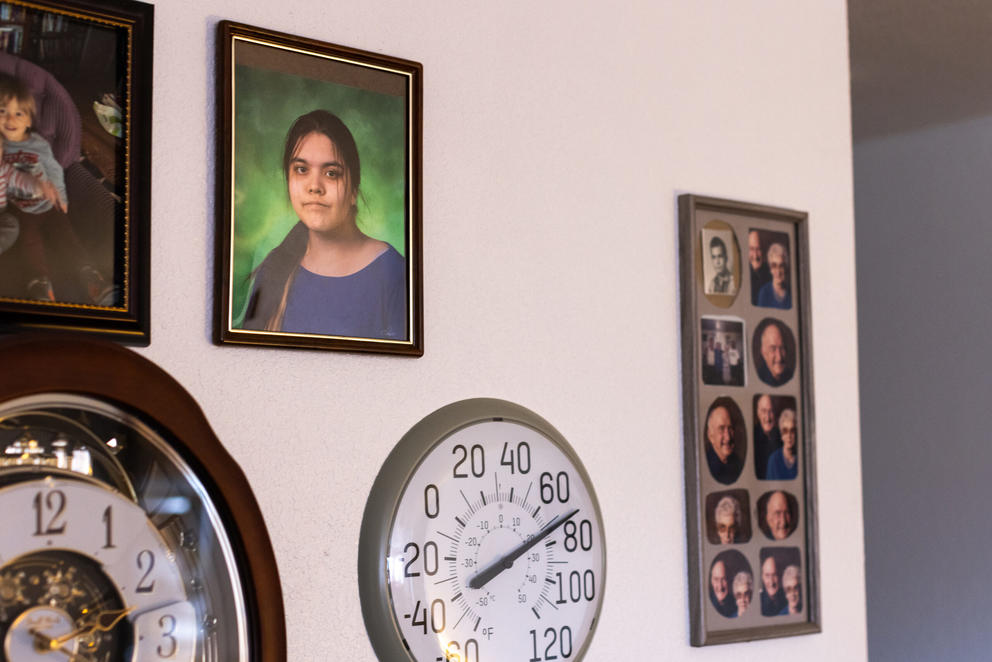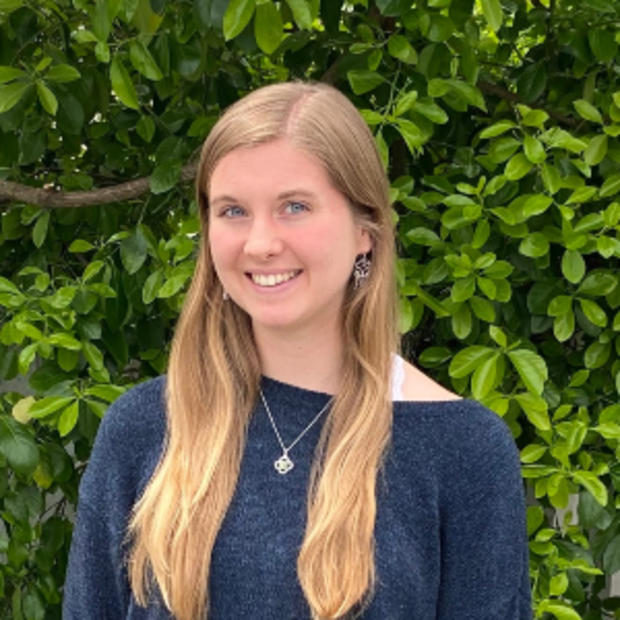“There’s no state regulation that requires districts to withdraw students for [state funding] purposes,” Johnson said. “The requirements that are in place are the truancy process.”
More than 14,650 students across Washington have been involuntarily withdrawn for not attending school since fall 2020, when OSPI started tracking this data. One of those students is Kit Nelson-Mora, a nonbinary Indigenous teen who uses they/them pronouns.
Kit was 16 years old and living with their mom on the Colville Indian Reservation when the Omak School District withdrew them in January 2022. As InvestigateWest reported on February 14, the district never referred Kit to a community engagement board, which recommends ways for students to become more active in school, or to juvenile court. Kit has now been missing for nearly two years, according to the Washington State Patrol, though their family says they’ve been gone longer.
Previous guidance from the state made districts believe they had to withdraw students after 20 consecutive days of unexcused absences, but in response to new messaging from state education officials in recent years, districts say they are now keeping students enrolled even when they can’t claim them for funding.
“The guidance came out from the state in the fall of last year, and so we met through the winter and spring to define what that procedure would look like,” said Jamila Singleton, who manages attendance and reengagement at Evergreen Public Schools in Clark County. “It takes a little bit of time in a system to retrain people to do something, even though it seems small.”
Yet even when districts do keep kids enrolled and implement all steps of the law — which itself has been scrutinized in recent years — some educators and advocates say it’s still not enough to keep kids safe. During the COVID-19 pandemic, hundreds of thousands of students disappeared from schools across the country and an estimated 50,000 are still missing, according to a recent analysis by The Associated Press.
The state’s truancy laws are meant to prevent kids like Kit from falling through the cracks. Indigenous students experience the highest truancy rates of all racial and ethnic groups in Washington, according to OSPI’s data.
The Omak School District changed its withdrawal procedures in September to keep truant students enrolled, based on OSPI’s statewide guidance. But staff at the district and within the Colville Confederated Tribes say the change makes little difference.
“These parents aren’t sending their kids to school,” said Rena Whiteman, an advocate with the Colville Confederated Tribes’ Youth Development Program, which works to improve attendance among Native students. “They’re not doing what they’re supposed to do, and there is no consequence for the parents and families.”
Keeping students safe
Washington passed legislation in 1995 known as the Becca Bill to protect kids who stop attending school. It’s named for Rebecca Hedman, a 13-year-old girl who was found murdered along the Spokane River after running away from home.
“The truancy laws were put in place just for this specific reason, primarily to keep students safe,” Johnson said. “I think sometimes that gets lost.”
But exactly how to keep students safe remains controversial. The Becca Bill requires school districts to file a truancy petition with juvenile court after a certain number of unexcused absences. The petition alleges that the student violated state attendance laws and that court intervention is needed to reduce absences.
The law caused Washington’s juvenile court cases to skyrocket. Truancy filings increased from 91 in 1994 to over 16,500 in 1998, according to the Washington State Institute for Policy, a nonpartisan public research group based in Olympia. By 2016, Washington was locking kids up for truancy and other noncriminal acts at one of the highest rates in the nation, according to the federal Office of Juvenile Justice and Delinquency Prevention.
In the 2010s, the Becca Bill came under fire from youth advocacy organizations for being too punitive. The state Legislature subsequently passed a law banning courts from detaining kids for not going to school, effective in July 2021.
Now, the Becca laws require public schools to take preventative steps to keep kids in class. After seven unexcused absences in a month or 15 in a school year, districts must refer students to a community engagement board. Districts are still required to file a truancy petition with juvenile court, but petitions can no longer lead to detention. They might lead instead to court-ordered tasks like community service or substance abuse assessments.
But in the 2021-2022 school year, only 45% of students who should’ve been referred to a community engagement board were actually referred, and just 4% of truant students had a truancy petition filed, according to OSPI’s 2022 report. Johnson said the low rates could have to do with school districts’ lack of staffing and resources to carry out the Becca Bill requirements, as well as a continued belief among some districts that the courts are too punitive.
Confusion regarding withdrawals could also be contributing, according to OSPI’s report. For example, a district might withdraw an absent student and then assume that because the student is no longer enrolled, the district doesn’t have to file a truancy petition — which is incorrect, Johnson said.
This misconception arose based on OSPI’s previous guidelines, which directed districts to drop students from their enrollment after 20 consecutive unexcused absences to ensure districts wouldn’t continue getting state funding for kids who weren’t in school. OSPI removed this wording from its guidelines in the 2018-2019 school year, but districts continued withdrawing truant students after 20 days, according to OSPI.
To address this, the state agency put out new messaging in 2023 to clarify that districts must still file petitions even for students who have been withdrawn. It also encouraged districts not to withdraw students until these legally required steps are completed.
“We’re out there hoping and asking districts to look for ways to keep them in their system,” Johnson said. “If they were actually following the law that’s prescribed, those steps would happen before a student ever reached that 20-day practice that we see districts following.”
Creating accountability
The pandemic brought attention to involuntary withdrawals not only in Washington, but across the country as school districts dropped absent kids from their rolls, said Hedy Chang, founder and executive director of Attendance Works, a national nonprofit addressing chronic absenteeism.
“We have a whole set of kids who are missing. We can’t explain where all the kids have gone, even a couple years after the pandemic,” Chang said. “I think some of that may be connected to disenrollment policies. If you just take the kid off the list, there’s no outreach.”
The Omak School District in Okanogan County, where Kit went to school, said it no longer immediately withdraws students after 20 missed days in a row. But this doesn’t mean kids are coming back to school, district staff said. Some kids have jobs during the day or are taking care of siblings to help their families make ends meet. Some are even on school grounds, hanging out in the common area but just not going to class, according to the district.
Among public school students who live on the nearby Colville Reservation, truancy rates are especially high. Advocates with the Colville Tribes’ Youth Development Program said they reach out to students regularly, conduct home visits, offer words of encouragement, and provide support like gas vouchers, meals, gift cards, parenting classes, and summer programs for families facing structural barriers. But kids continue to miss school.
Truancy court isn’t working either, they said.
About 41% of the 201 truancy cases in the Okanogan County Juvenile Court in 2023 were Native kids affiliated with the Colville tribe, according to the Youth Development Program. And at least half of the students and families involved in those cases never showed up to court at all, said Tashina Gorr, an education advocate with the tribe’s program.
“They don’t even appear,” Gorr said. “Despite our efforts to try to communicate and offer transportation to court and to meetings, there’s not very much follow through on the students’ or parents’ end.”
Statewide, nearly a quarter of American Indian and Alaska Native students were truant in the 2021-2022 school year, according to OSPI’s report. For Gorr and Whiteman, another advocate with the tribe’s program, the high rates seem tied to tribal members’ lack of trust in the state’s education system. This distrust was exacerbated by the pandemic and has proven difficult to rebuild, they said.
“The behavior starts in the home,” Whiteman said. “How we can fix that? I don’t know.”
Meanwhile, the state keeps trying. Proposed legislation would give more economic and academic support to chronically absent high school students in Washington. If passed, tribes would have access to a grant program established by OSPI to address absenteeism. The bill passed the state Senate unanimously on Feb. 13 and has advanced to the House for further deliberation.
Education advocates say they’re encouraged by renewed state efforts to address school attendance since the pandemic. But they’re also bracing for a long road ahead.
“The public school system just hasn’t evolved as much to the life of a more modern family,” said Karen Pillar, director of policy and advocacy with TeamChild, a nonprofit law firm for youth in Washington. “Public education is big and complex. It’s a big ship to move.”
This story was originally published on Feb. 21, 2024, on InvestigateWest.



